-
Posts
761 -
Joined
-
Last visited
-
Days Won
5
Content Type
Profiles
Forums
Events
Store
Downloads
Gallery
Posts posted by Katsujinken
-
-
-
1 hour ago, John C said:
Maxim:
I would also add that for 480,000 yen, you could get a nice papered older nihonto made with traditional tamahagane steel. But if a modern piece made with modern steel is what you want, then go for it.
John C.
You’re not wrong in principle John, but this blade is also traditionally made with tamahagane — the only material that can be used to make a sword in Japan. It is simply a modern blade, a shinsakuto. -
My $0.02: Take a small bit of that money to buy a few books (plenty of recommendations here if you search) and save more in the meantime.
By the time your budget is sufficient you’ll have a better idea of what you like and how to go about acquiring it.
-
 4
4
-
-
Quote
Is this the beginning of the end of the certification system overall? Is there a shortage of experts available to judge the authenticity of sword fittings?
No.-
 1
1
-
-
A bump for the week
-
21 minutes ago, Rivkin said:
I don't see here papers clearly stating its Nambokucho Masahiro. Maybe they are, maybe they are not. Its (highly) unusual for mumei attributions NBTHK mentioning exact era, especially Meitoku (short one) in Nanbokucho. One can get more general attribution to Nanbokucho though. On the other hand, dealers often write Meitoku to indicate the item is still Nanbokucho.
Default attribution Masahiro is certainly Muromachi generations. Nanbokucho work is actually quite rare.
This is a great point.-
 1
1
-
-
Many factors go into pricing something like this (Mumei? Condition? Quality? Overall health? Sayagaki? Koshirae? Level of paper and nuances of the attribution, etc.) , but the price you see on that old page is in the ballpark of where something like this would start. The yen was stronger then so I’d call it $5000 US to be safe.
Tanto often command a premium because there are relatively fewer of them.
-
 2
2
-
 2
2
-
-
Given the lack of age many of the pieces could have been in better condition, and most of the work simply isn’t that skillful in my opinion,
especially when compared to the work of earlier soft metal masters.
The prices some of the lots achieved, especially with the premium added, were outrageous.
But hey that’s the free market for you!
-
I saw all of these lots in person, and I would not describe any of the tsuba or koshirae lots as “top quality.” All of the koshirae had issues. I don’t know who was buying them or why, but I don’t understand the prices they were willing to spend. That said, auctions are a good route to go if you’re short on time or knowledge, but have plenty of money. I don’t think any of these lots were so unique that you couldn’t track down comparable or better pieces with a dealer and/or in Japan for the same amount of money or less.
I suspect we are seeing some foreign money at work here, and I say that without a value judgment implied.
-
 1
1
-
 2
2
-
 1
1
-
-
Only if the blade is machi okuri: http://www.ksky.ne.j...sumie99/suriage.html
And this would still have occurred hundreds of years ago, leaving plenty of time for more polishes.
-
5 hours ago, nulldevice said:
When you say you want more hamachi, are you implying that too much metal has been lost in polishing making the hamachi near flush with the start of the nakago? I've heard a few people make comments like this and I'm not 100% sure what people mean.
Thanks
Yep, exactly. Compare to my photo up above.-
 1
1
-
-
2 hours ago, Rivkin said:
Only the first is an issue. Expected for rough Gassan. There are fine example ofcoarse, but this one is average.
Putting a link to seller's page would save us time.
It’s Aoi. You can tell from the photos. https://www.aoijapan.com/katana:mumeigassannbthk-hozon-token/ -
Personally I want to see a bit more hamachi on a blade, but the workmanship is good in my opinion.
That said, something about that kissaki feels weird/out of proportion to me... anyone else agree?
-
I thought that looked like Gassan work. :-P
It's not a bad package for 600,000 JPY (especially with the weak yen). The kizu are about what I would expect for a blade of this age at that price point from Aoi Art. Seems like a good example of the school's work. You could certainly do a lot worse.
-
 1
1
-
-
Bump for the weekend.
-
That’s not a crack. Just a visible layer / lamination as Geraint said.
-
 1
1
-
 1
1
-
-
7 hours ago, Jacques D. said:
I think most people have a misunderstanding of how to use kakana.
Context for cutting also matters when evaluating blades and “techniques”. For example KSR (in the video shared above) is an armored style and so the cutting mechanics are totally different from an unarmored style of kenjutsu. -
I don’t see a crack in the boshi.
What you’re seeing on the mune is burnishing (nagashi), which is part of the polishing process.
-
 1
1
-
 1
1
-
-
Here is my Juyo Naoe Shizu (71 cm and kenzen), generally loved by those who see it in person. Darcy (RIP) once said he thought it would compete for a Kinju attribution if it were unpapered (and without the Honma Junji sayagaki giving it to NS).
The hamon has sunagashi and kinsuji, and the hada has fine ji nie and chikei. It demonstrates well the mixture of Soshu and Mino that one wants to see here. Mike Yamasaki thought it could have been ordered as an utsushi of Sadamune.
As with all schools, there are “levels” and it’s good to know what you’re getting if you’re buying Juyo.
-
 4
4
-
 1
1
-
-
Hello folks,
I'm posting this on behalf of a dear friend who is based in the UK. You can find all of the relevant details in the attached images. Sato is an interesting smith, a bit of a maverick renowned for making his own tamahagane with a focus on practically effective swords, with an interesting lineage stretching back to the Shitahara school.
Price: 5000 GBP (free shipping or collection in UK; otherwise shipping charged at cost)
You may contact John Evans directly with interest (info@battodo-fudokan.co.uk) or if you have immediate questions I would be happy to assist you as well. I can provide higher resolution versions of the attachments if requested.
Below is a bit more info about the smith and this particular sword, and you can find measurements and other information in the attachments.
Thanks!
///
Sato Shigetoshi was born in 1945 and by his mid 30s built a business selling teaching materials to schools in Hachioji City. This involved purchasing bladed tools and in his quest to better assess their quality he approached the swordsmith and knife maker Shigeyoshi Iwasaki. His interest deepened and soon he was training with him. Iwasaki was particularly focused on degrees and kinds of sharpness and was renowned for the razor blades he made. As Sato's skill grew Iwasaki encouraged him to learn about sword smithing and recommended he do so from Kanemasa Ohno of Seki City, Gifu Prefecture.
Sato began training with him in 1988. Ohno was particularly insistent that Sato should strive to produce swords that would not bend - this was one reason he espoused the shihozume method. In 1992, Sato became one of the first swordsmiths to pass the new testing process for certification by the Agency for Cultural Affairs. In the same year, he opened his forge in the hills near Hachioji. Sato has made extensive research into the history of the local Shitahara school. Smiths who had gathered near Hachioji Castle to supply the needs of this Hojo clan fortress were displaced when it was first captured by Hideyoshi in June 1590 and then demolished on the orders of leyasu. Fortuitously leyasu took over their patronage and they became direct retainers of the Tokugawa family and were permanently established in the Shitahara district.
Many of the smiths here took the name shige (Terushige, Hiroshige, Yasushige). They all used the satetsu from the local Asakawa river. Sato studied some of the blades made by those smiths and experimented with Asakawa satetsu to try to recreate the swords they made. Sato is now one of 5 contemporary smiths who regularly produce their own tamahagane from local sources. Sato received the Shige name from his first teacher wasaki in Nigata perhaps in recognition of his passion for the Shitahara school. His quest is to create blades to match those of that tradition, combining the sharpness stressed by Iwasaki and the unbending strength demanded by Ohno Sato.
Note: Although this blade was commissioned in October 2019 and completed in October 2020, due to restrictions caused by the Covid pandemic, addition of a bohi and changes to the koshirae, it was finally received in October 2023. It was tested for balance and cutting ability by John Evans, myself, and another senior Battodo practitioner one afternoon in Japan but is otherwise unused and as a result, in excellent condition.
-
This was a good thread! Please keep us posted.
-
It’s true — even though the kinpun mei is illegible it’s a bit of history in its own right.
-
 1
1
-
-
I would agree.
I’m not in the top echelon of experts here (or anywhere) but Aoe surprises me and Mihara does not. I’d love to know what the discussion was like during the shinsa.
Buy the sword and not the paper, as they say…
-
 2
2
-
-
I also think Tanobe made it clear he would not contradict the current NBTHK appraisal — you‘d have to pick one route or the other.


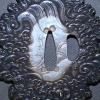
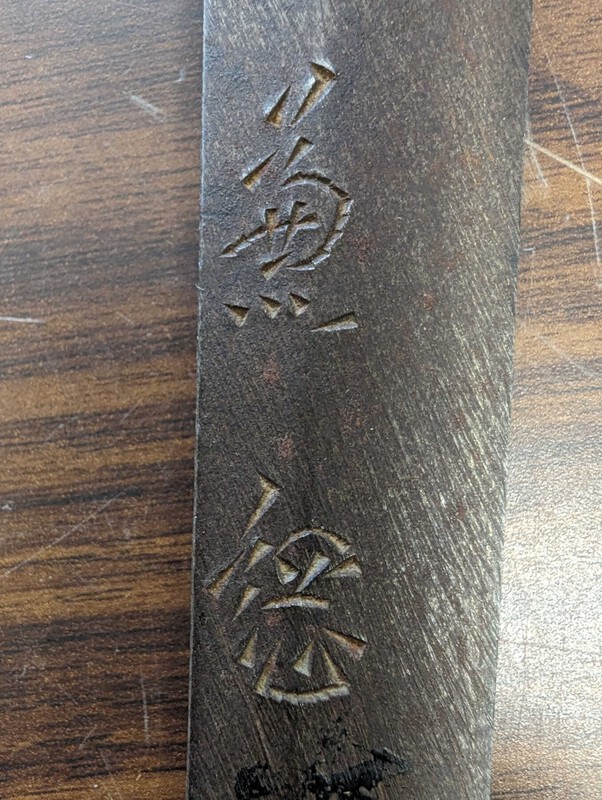
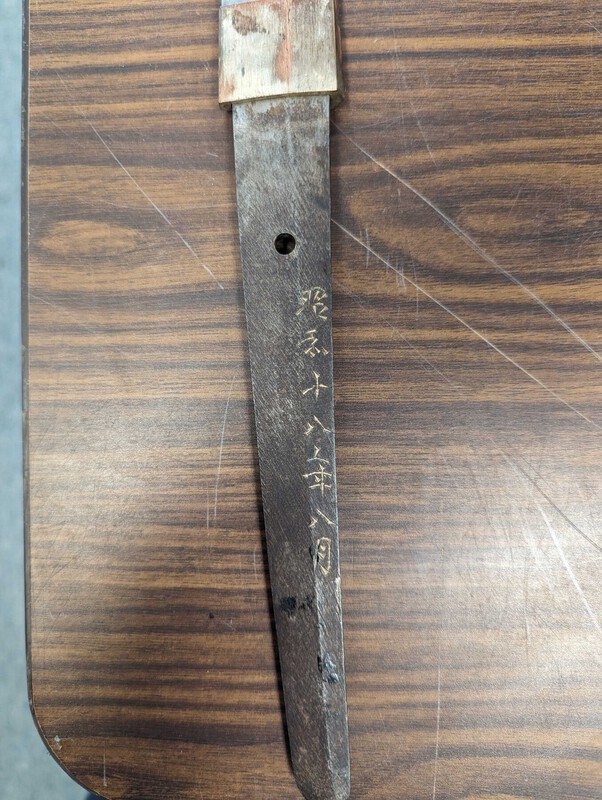
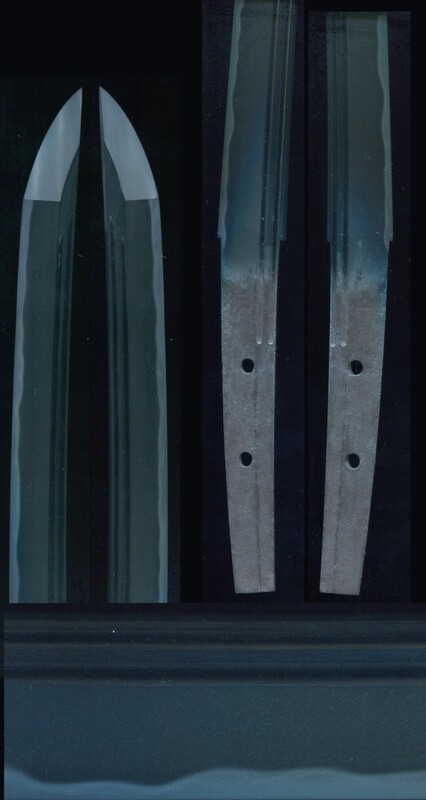
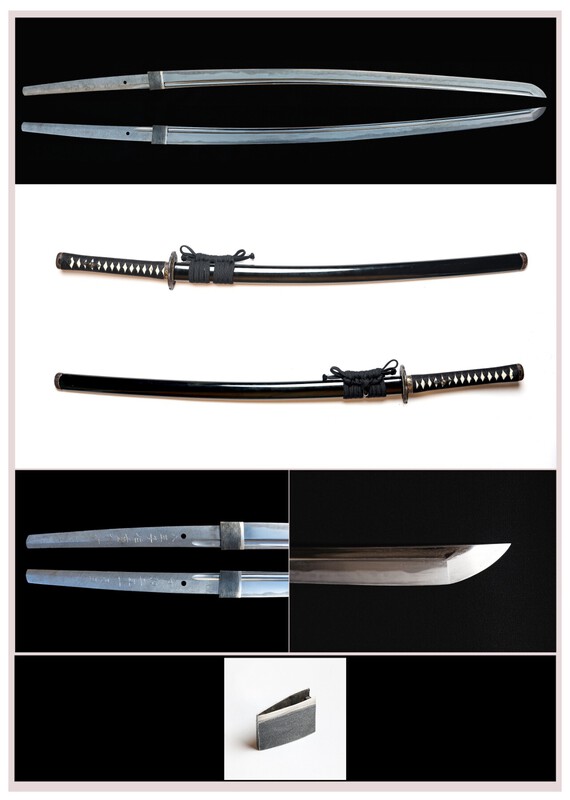
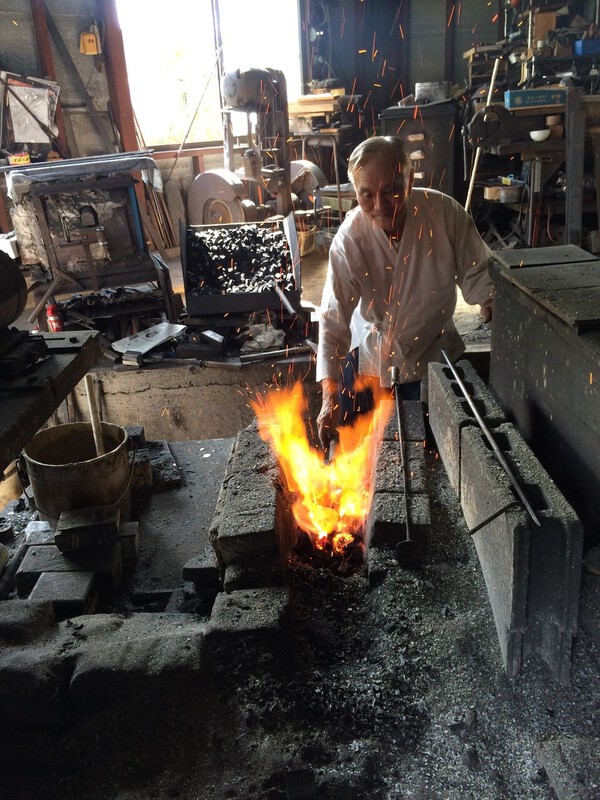
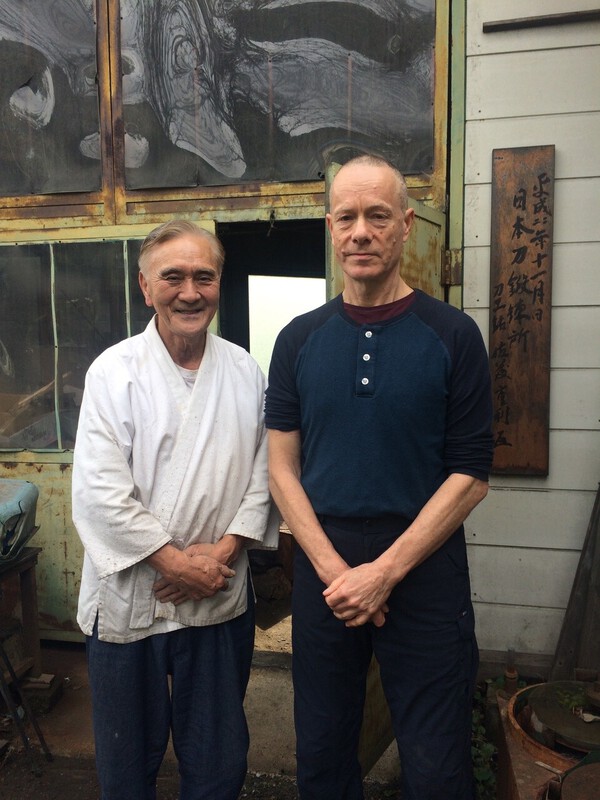
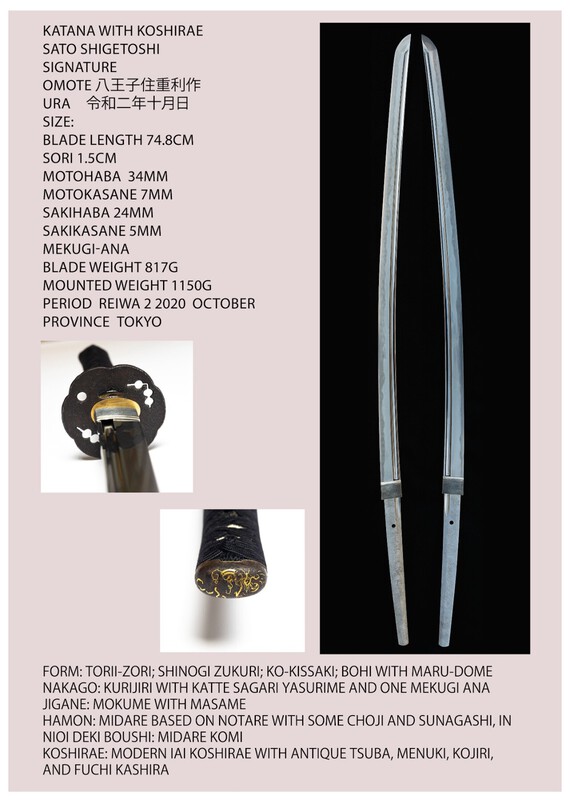
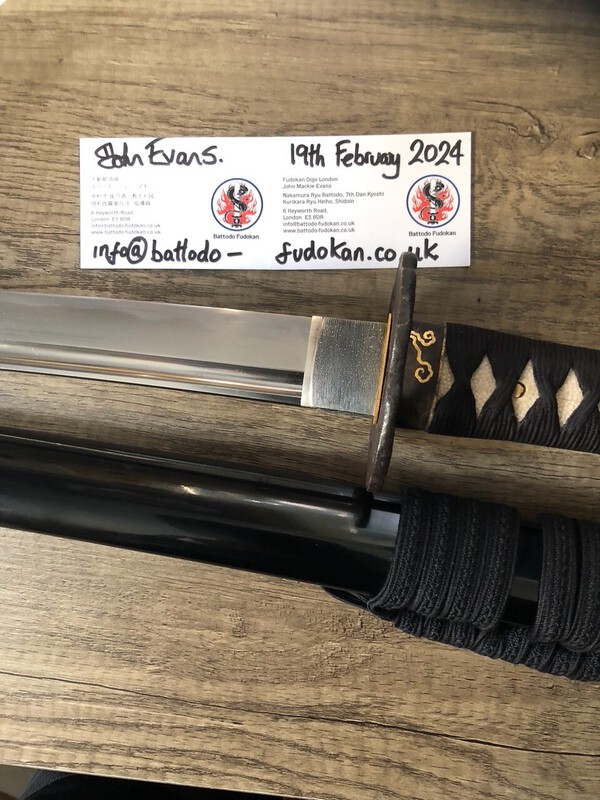
Quick help with a WW2 Blade
in Translation Assistance
Posted
I thought the first character might be Kane but I just couldn't get there... :-P